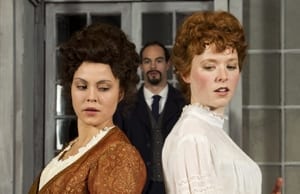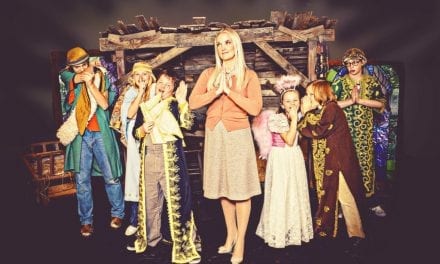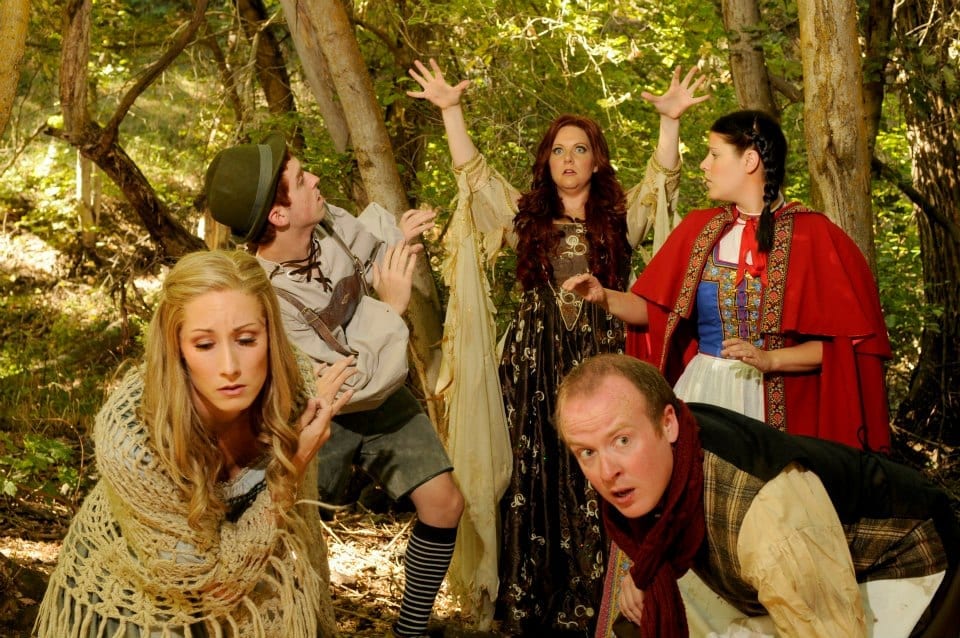 PROVO — Henrik Ibsen confronted us with a very raw and central question when he penned Little Eyolf: how does one strike a balance between being a parent and being a spouse? How do we give ourselves entirely to both spouse and child without resenting or being resented by one or the other? Given this text, I had steeled myself for a very intense, probing evening. I am reticent to report that I had over-prepared.
PROVO — Henrik Ibsen confronted us with a very raw and central question when he penned Little Eyolf: how does one strike a balance between being a parent and being a spouse? How do we give ourselves entirely to both spouse and child without resenting or being resented by one or the other? Given this text, I had steeled myself for a very intense, probing evening. I am reticent to report that I had over-prepared.
This story is not well known by most casual theater patrons, and in my opinion that is due to the shear weight of the topics covered. Little Eyolf is the tale of a couple who married and had a child who became crippled as an infant. Time goes on, the child grows, the husband dives into his work, and the couple drifts apart. One day the wife attacks her husband, bemoaning his involvement with their son and his neglect of her. She muses that perhaps their life would have been better had the child died, or never been born at all. During this argument there is a large commotion at the nearby seashore. The couple soon realize that this commotion is due to a group of kids finding a drowned child, who turns out to be little Eyolf, their own son. From there the couple struggles to find meaning in life, in their relationship, in anything at all. As I stated, this play is dense and heavy.
This performance was held at BYU’s Margetts Theater, and was my first experience in this facility. It’s a small black box, arena style room, with seating on 3 sides of a small, flat stage. The set, designed by Carter Thompson, is the façade of what appears to be a large, oceanside manor. The set is well built and easily adapted to fit the many locations throughout the show. Brianna Stephenson has done an admirable job in designing the lighting, which is stark and supports the tone nicely. Likewise, the music chosen throughout the piece lends itself well to the gravity of the subject matter and underlines specific dialogue points perfectly. I was also pleased at the costumes, which were rich and help me get accustomed to the time period of Ibsen’s play. Deanne DeWitt, with the assistance of Lyndi Sue Mecham, paid close attention to the smallest details of the costuming and I appreciated that.
The cast was comprised of 6 characters, including Zach Elzey, an 11-year-old boy who plays the title role of Little Eyolf. It’s clear that he’s invested and has put in much effort to learn his lines flawlessly. His performance is admirable, especially considering that he’s sharing the stage with college students. Unfortunately, most of his lines were delivered with the same level and type of emotion throughout the play. I felt that Elzey was saddled with a very difficult task and not given sufficient direction to achieve a stellar performance.
Next I was drawn to the elegant Mia Selway, performing the role of Rita Allmers. Selway seemed quite sure of herself and comfortable on stage. In the early moments of the production she presented herself wonderfully and I was quite pleased with what she brought to the show. Sadly, however, as the story progresses and the character was confronted with insurmountable odds and the accompanying emotional torrents, Selway fell flat and her performance became very uniform. Emotionally, dynamically and even in the pitch of her voice, Selway would reach a level and remain there for a number of lines, then switch suddenly to a different level and forge ahead. The variation that makes live theater enjoyable was missing from this characters development, which I was very sorry to see.
Eliot Wood, here portraying Alfred Allmers, was the next actor who caught my attention, but not in a good way. Wood’s hair and goatee seemed very staged and quite distracting. In an effort to age the actor for the part, they had chosen to shave his widow’s peak. Unfortunately, it wasn’t shaved closely enough and was very easily seen. This could all be a personal issue that only stuck out to me, but I found these choices very off-putting and it lent itself to reminding me of an elementary school boy borrowing his father’s sports jacket for a school play. As for his performance, it seemed to me that Wood lacked motivation for many of the choices he made. When dealing with a text fraught with emotional caverns and heavy themes, I don’t feel that Wood spent the time necessary to make these terrible events real to himself, and as such they came across as forced to me. I particularly thought that the moments when the character was to be driven to tears with grief came off as stiff and almost disinterested. It felt more that he was simply waiting for his next turn to talk.
Asta Allmers, played by Heidi Smith, was another character who seemed to hit emotional ceilings. Late in the piece the audience learned that she’s been carrying a massive piece of information that changes every relationship in the show. However, I failed to see the angst of that burden pushing on her.
Jennifer Chandler as The Rat-Wife was, for me, a bright point in the production. Chandler was only on stage briefly, but was completely committed to what she was doing. She brought strong physicality and character development. One might argue that as an absurd character, the Rat-Wife is easier to portray. That may be true, but it was Chandler’s commitment to the process that drew me to her, and caused her to outshine her counterparts.
Finally, Borghejm, played by Shaun Frenza, was another fairly flat character who struggled with allowing me to see his real emotion. Though to be fair, his was very likely the most textured performace. At times he approached honesty in his portrayal, but seemed to shy away from it quickly. It seems that a few modifications from Barta Lee Heiner, the director, would have been able to clear up many of these fatal issues. In my opinion, Heiner either didn’t give the proper context, or didn’t have a firm enough hand to see to it that those directions made it to the stage.
After critiquing these acting performances individually, I should say that as a whole cast, my main overall frustration with the piece was the lack of reacting. Usually it seemed that every actor was simply saying their lines to get to the next line, not really listening to one another or internalizing what was being said. The simple act of allowing that negative space between lines to mean something gives life to a piece and turns it from a grouping of lines, into a living, moving, arcing piece of art. That mark was plain and simply missed here. Again, the question posed, how does one strike a balance between being a parent and being a spouse? I’m left wondering. Perhaps a more pertinent question for this particular cast is, how does one strike a balance between delivering lines and reacting to lines of others?
[youtube:http://www.youtube.com/watch?v=crVTwFU-3l4]





